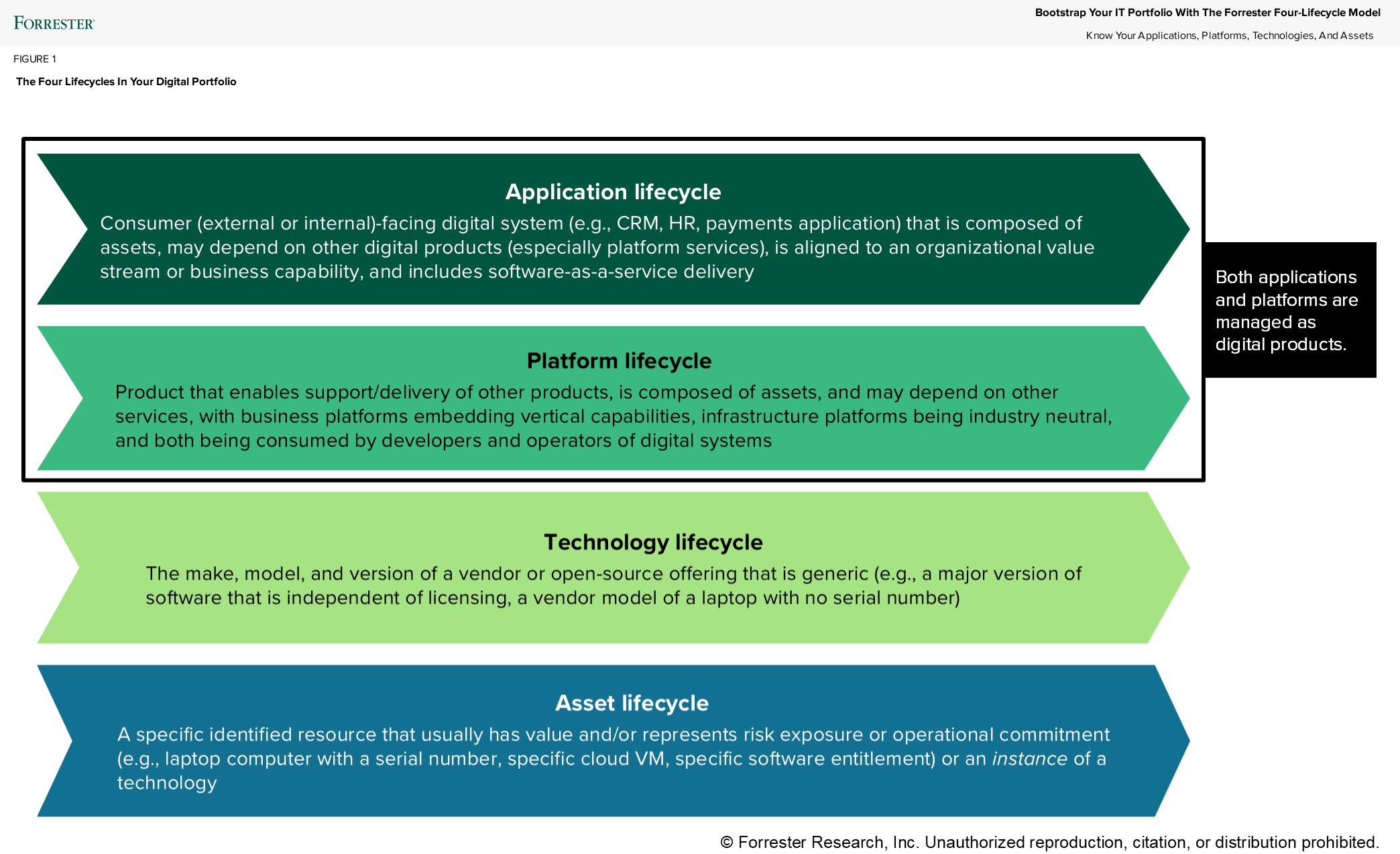Graphic IT Management Requires Clear Language
Every week, I talk with IT leaders grappling with an all-too-familiar challenge: managing an increasingly complex IT portfolio while avoiding the dead ends of outdated conceptual models.
One debate that refuses to die? The endless squabble over applications vs. services.
Let’s be blunt: History has passed by the ITIL-era advocacy of “service portfolios.” At the time, ITIL consultants were fond of coming into IT shops and saying things like, “The business doesn’t want an application! It wants a service!” Now, some in the agile and product management communities similarly argue that application portfolio is an outdated construct that should be replaced with product portfolio. But these arguments overlook just how entrenched the concept of “application” is (and no, it doesn’t just equate to a vendor-supplied technology). In practice, application portfolio management is here to stay, because “application” is a well-understood term that anchors IT investment, governance, operational practices, and executive-level decision-making.
Instead of fighting over labels, organizations should establish a structured ontology: a shared understanding of how applications, platforms, technologies, and assets interact.
Portfolio Rationalization: Beyond Simple Inventories
IT portfolio rationalization isn’t new, but the stakes are higher than ever, and the enabling technologies are making a quantum leap. Organizations aren’t just trying to streamline costs or reduce redundancy; they need an integrated model that maps relationships across applications, platforms, and supporting technologies.
Our latest research outlines four key domains that organizations must inventory and manage:
- Applications: the running and operational software systems that directly support business capabilities, often also mapped to enterprise processes.
- Platforms: internal technology environments that enable the creation or delivery of applications or other platforms (see A Simple Definition Of “Platform”).
- Technologies: the software and hardware components, frameworks, and vendor products used to build applications and platforms, at a product category (SKU) or type level, often controlled via technology lifecycle management.
- Assets: the individual instances of hardware, virtual machines, and licensed software deployed within the IT environment.
This structure provides clarity without forcing unnatural terminology shifts. Trying to rebrand “application portfolio” as “product portfolio” is an uphill battle when senior executives already think in terms of applications. Similarly, the ITIL-era service terminology never translated well into practical management.
Moving Past The Application Vs. Service Debate
The application vs. service debate is more about legacy frameworks than actual IT needs. ITIL positioned services as the fundamental unit of IT management, but in practice, most organizations never fully operationalized service portfolios beyond a catalog of requestable things. (And such catalogs are surprisingly decoupled from the operational portfolio in real-world practice, due to their internal marketing aspects. They evolve in response to usage patterns — e.g., how people search and find the services they need — and increasingly are accessed via chatbots, not portals.) Meanwhile, “service” has taken on new meanings, especially in the context of cloud computing, where microservices, APIs, and SaaS offerings dominate.
At the same time, applications have persisted as the primary management construct. The term “application” has broad industry use in large IT shops. I get calls every week centering on the concept. This is why enterprise architecture, strategic planning, IT finance and FinOps, and even ITSM products still organize portfolios around applications. The word product may make sense in an agile context, but outside of software companies, “product portfolio management” just isn’t how enterprises talk about large-scale IT investments today.
The solution isn’t to keep relitigating terminology. It’s to adopt a clear, structured model that integrates applications, platforms, and supporting technologies into a coherent IT graph.
Graph-Based IT Management: The Next Evolution
We’re seeing a fundamental shift toward graph-based IT management, where relationships — not just lists — define how organizations understand and optimize their technology landscapes.
Major vendors such as ServiceNow and Atlassian are embedding graph models into their platforms, reflecting the reality that IT organizations need dynamic, interconnected knowledge bases rather than static inventories. The goal isn’t just to track applications or services — it’s to understand dependencies, impact, and lifecycle interactions across the entire IT ecosystem. And furthermore, we need to be able to easily integrate such graphs and transcend the limitations of shipping RDBMS tables around via ETL.
For IT leaders, this means shifting focus from static portfolio reports to ontology-driven IT management. Organizations should define and maintain a unified graph of IT knowledge, mapping how applications, platforms, and technologies interact to support business capabilities.
The Road Forward: IT Leaders Must Take Control
To prepare for this shift, IT organizations must:
- Define an enterprisewide IT ontology. Establish clear relationships between applications, platforms, technologies, and assets. Avoid unnecessary terminology debates. Use labels that align with executive and operational understanding. How are people actually talking?
- Adopt graph-based portfolio management. Move beyond traditional application performance management approaches by mapping dependencies and lifecycle impacts. The shift toward AI-powered, knowledge graph-driven IT management is already happening.
- Govern IT portfolios as interconnected systems. IT isn’t just a collection of independent applications. Dependencies between software, infrastructure, and business processes must be explicitly modeled and continuously updated.
Conclusion: IT Management Must Evolve
To quote Shakespeare, “A rose by any other name would smell as sweet.” If you have a broad consensus and day-to-day operational usage of a structured set of terms (whether centered on services, applications, or products), great! The real opportunity is in ontology-driven IT portfolio management, supported by graph-based approaches that integrate applications, platforms, and supporting technologies (by whatever labels) into a real-time, AI-powered IT knowledge model.
It’s time to stop arguing about applications versus services and start building the structured, graph-enabled IT portfolios that will define the future of IT management.
Forrester clients can read the full report to build a stronger foundation for IT portfolio management.
Personal note: I identified the four-lifecycle model in 2012 in the second edition of my book, “Architecture & Patterns for IT.” Hundreds of conversations with IT leaders, enterprise architects, tools vendors, and portfolio managers since then have validated that most large IT shops tend to converge to it, with minor differences in nomenclature. It may seem simple, but to fully operationalize it with good data quality is a heavy lift — yet essential and valuable when achieved. The four-lifecycle report here provides a clear decision flow for portfolio decisioning.

